April 15, 2021
Globally, there are 337 species of turtles, with seven of them are sea turtles. Compared to lizard or snake, the number of turtle species is considerably low. In Indonesia, there are at least 39 species of turtles.
Generally speaking, turtles can be identified according to its color, pattern, and characteristics of their shells. The upper shell of a turtle is called carapace, while the plastron is the lower portion of its stomach. The turtle’s shell protects it from predators.
Most turtles can retract their head, legs and tail into their carapace when threatened. However, there is a group of turtles that can only retract their head and tail into their carapace. Sea turtle is the only species that is unable to retract any part of their body into the carapace.
Turtle Species on the Kampar Peninsula
Restorasi Ekosistem Riau (RER) recorded at least six species of turtles were found on the ecologically important peat swamp forest of Kampar Peninsula. Two of them, Spiny Turtle (Heosemys spinosa) and Malaysian Giant-Turtle (Orlitia borneensis), are categorized as Endangered (EN) and Critically-endangered (CR).
The following is a list of the turtle species recorded on the Kampar Peninsula:
Pelochelys cantorii (EN)
This species is known as Giant Softshell Turtle, a freshwater turtle that is considered among the largest turtle species.
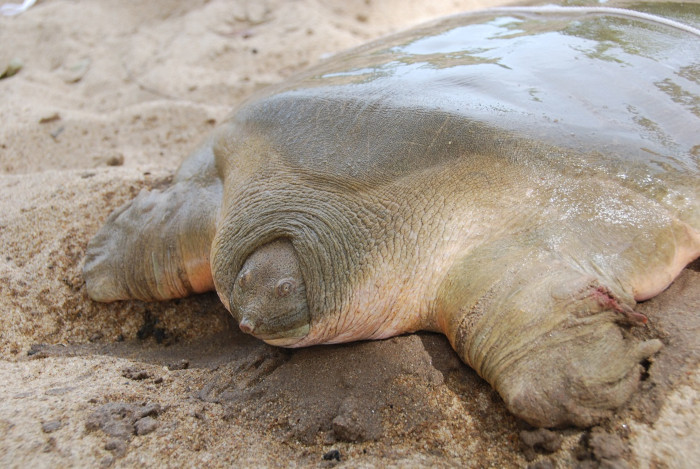
An adult Giant Softshell Turtle carapace can measure up to 130 cm in length and weigh up to 50 kg. The carapace is mostly greenish-green, with no distinguishing colour or pattern spots. One of the distinctive features of this species is its nose, which resembles a short trunk. At first glance, the face resembles a frog so it is often referred to as a frog-faced softshell turtle.
This species can be found in a variety of habitats, including estuaries of major rivers and along coastlines. Its range extends from Southwest Asia to South China (including Hainan) and Southeast Asia to Malaysia, Indonesia (Sumatra, Java, and Kalimantan), the Philippines, and North Papua.
Batagur affinis (CR)
This species is also called as River Terrapin. It is a river turtle that lives in brackish water of large rivers or on the coasts adjacent to mangrove forests.
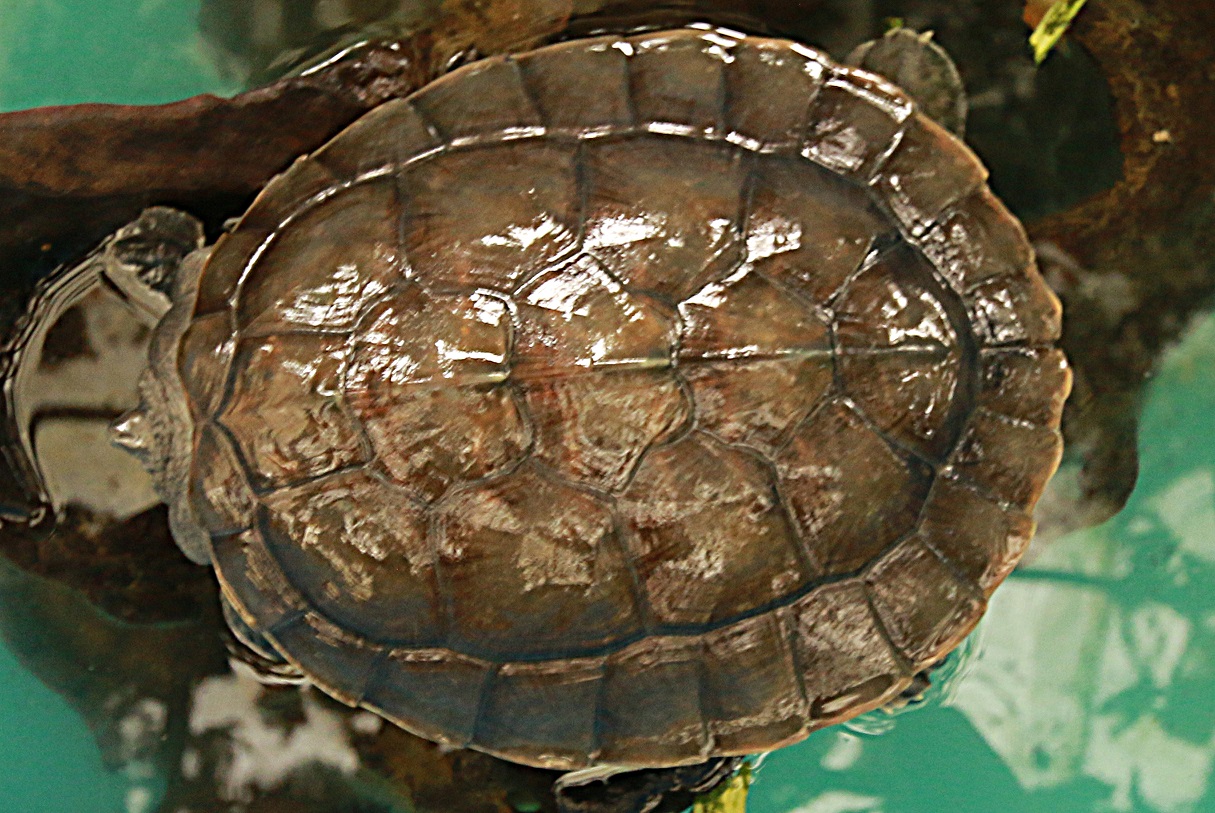
The adult River Terrapin has a medium body size, with a carapace that measures around 70 cm, convex shaped without keeled scales. The carapace may be gray, greenish brown or black. One of its distinctive features is the pointed snout. In addition, toes are fully webbed and has four claws.
River Terrapin is listed on the IUCN Red List as Critically Endangered (CR) under the IUCN Red List, due to illicit fishing and trade.
Batagur affinis is divided into two subspecies with the following distinct distributions:
● Batagur affinis affinis: Southernmost Thailand on west-coast Malay Peninsula, along western coast of Malay Peninsula and Eastern coast of Sumatra.
● Batagur affinis edwardmolli: Songkhla region on southernmost
Thailand, Eastern coast of Malay Peninsula and Cambodia)..
Batagur borneoensis (CR)
The species, which is commonly known as Painted Terrapin, is another species of the Batagur genus that is found on the Kampar Peninsula. The length of the carapace ranges from 50 cm to 100 cm, with an oval shape and a flat top.
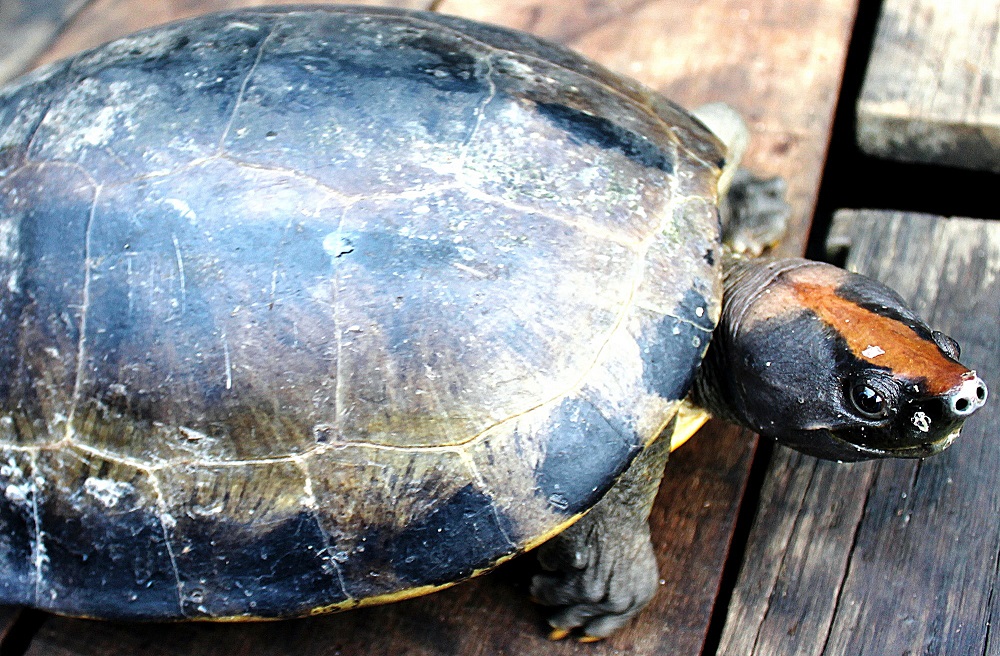
Carapace cream or brownish with black blotch that creates three lines, one on vertebral scales, and one each on costal scales. There some Painted Terrapins who have dark back. Adults have a wide red line over the top of their heads, as well as white cheeks.
This species can be found in the estuaries of major rivers up to the coastline. Newly hatched turtles migrate from the coastal area to the freshwater area of the same river, at least 3 kilometers away from the nest.
Painted Terrapin is widely spread in southern Thailand, Malaysia, Sumatra and Kalimantan.
Heosemys spinosa (EN)
This species is known as the Spiny Turtle, which in Indonesia is called the Kura-kura Duri or Kura-kura Matahari. The species can be found across Southeast Asia, from Myanmar to Southern Thailand, the Malay Peninsula, Sumatra, and Kalimantan, and has been identified on several small islands in the region.
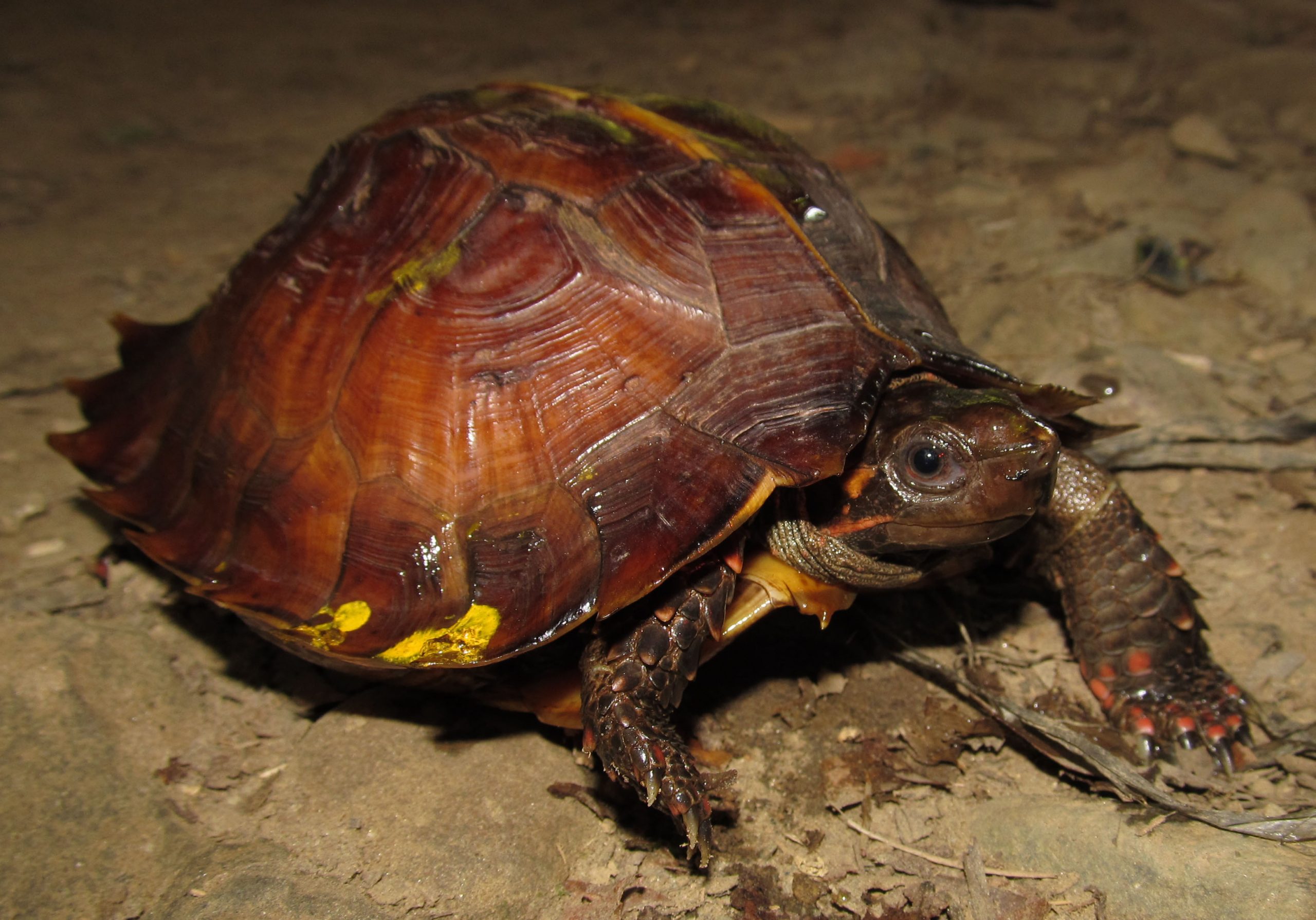
An adult turtle’s carapace measures between 21 and 24, convex-shaped and brownish
in color. The head is predominantly dark brown, with a slight red line visible on the edge of the head. The legs are scaly reddish and scaly.
The body is covered by a skeleton structure made from its ribs. Its spiny carapace protects it from predators. However, it will gradually disappears and becomes smooth in adulthood.
As a herbivore, this species is often seen in shallow waters and wet forest soils where it hides in heaps of leaves and herbaceous shrubs.
Siebenrockiella crassicollis (VU)
This species has several names such as White-Cheeked Terrapin, Black Marsh Turtle, Malaysian Black Mud Turtle, or even Smiling Terrapin because its upraised jaw line, resembling a smile. With a carapace length of about 20 cm, this species is relatively small. The carapace is convex and serrated on posterior.
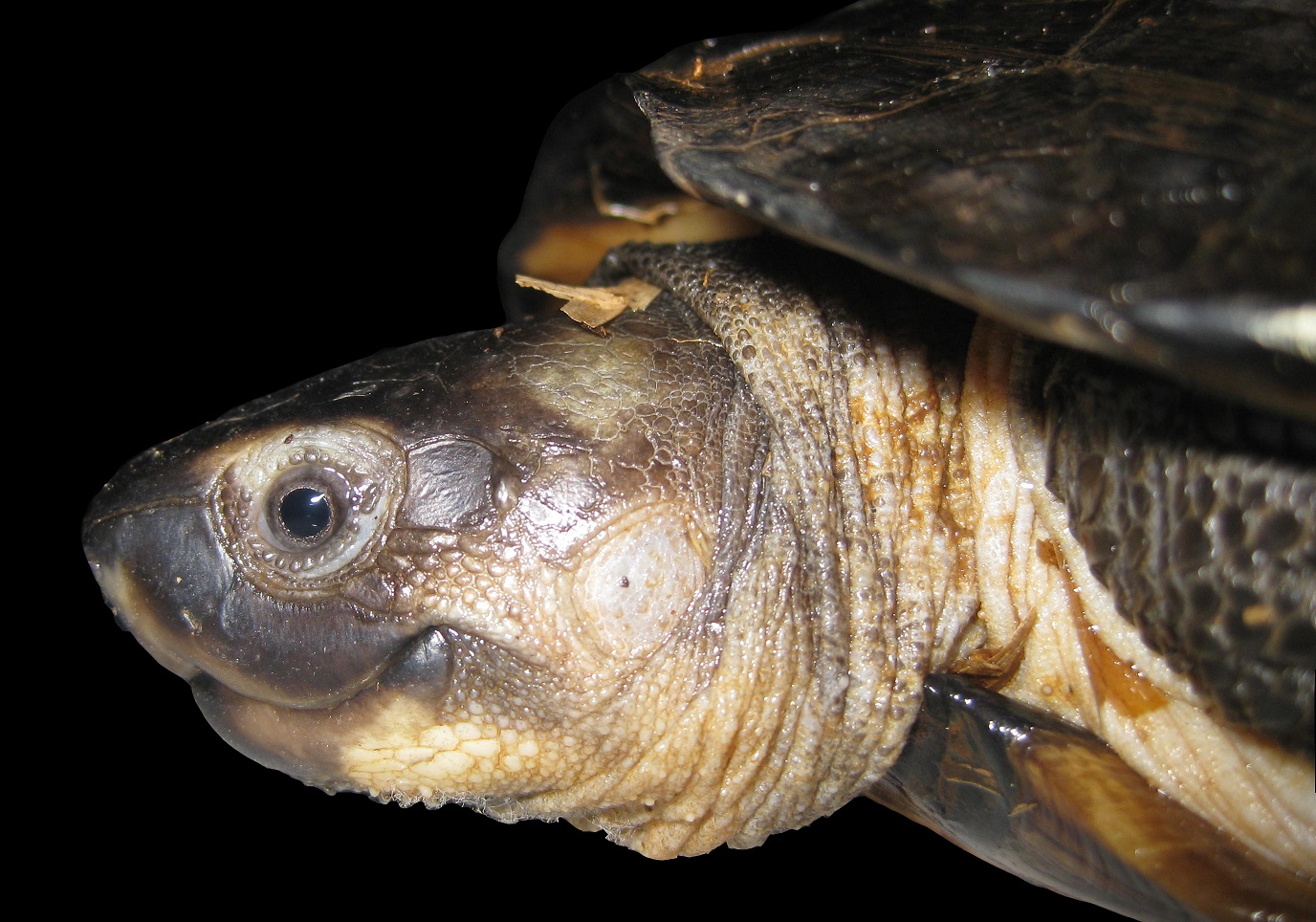
The carapace is uniformly black, with no other shades, blemishes, or patterns. The head is black as well, and it is broad and high, with slightly pointed snout. The head looks shorter due to its thick neck. There are pale white spots on the cheeks and over the nose.
Toes are fully webbed. This turtle prefers slow-moving water bodies with soft substrate and extensive bank vegetation This turtle can be found in rivers, lakes, swamps, and small pools in the forest.
They are widely distributed in southern Vietnam, Thailand, Myanmar, Malaysia, Sumatra, Java, and Kalimantan.
Threats to the Turtles of the Kampar Peninsula
These six species of turtles were recorded and identified on the Kampar Peninsula and described in Turtles of the Kampar Peninsula publication. The publication itself is important to protect turtle species on the Kampar Peninsula and on the RER areas.
The reason why it is important is because these turtles experience a lot of potential threats that reduce their presence in the wild. The majority of turtle species in Indonesia are classified as Near Threatened (NT) by the IUCN.
Some of the potential threats are poaching, international trafficking, deforestation, and loss of habitats that cause their numbers continues to decrease in the wild. Slow reproduction rate, high incidence of hatching failure and high mortality in baby turtles also contribute to their reduced number in the wild.
Therefore, more attention is needed for the recovery of the turtle population in Indonesia.